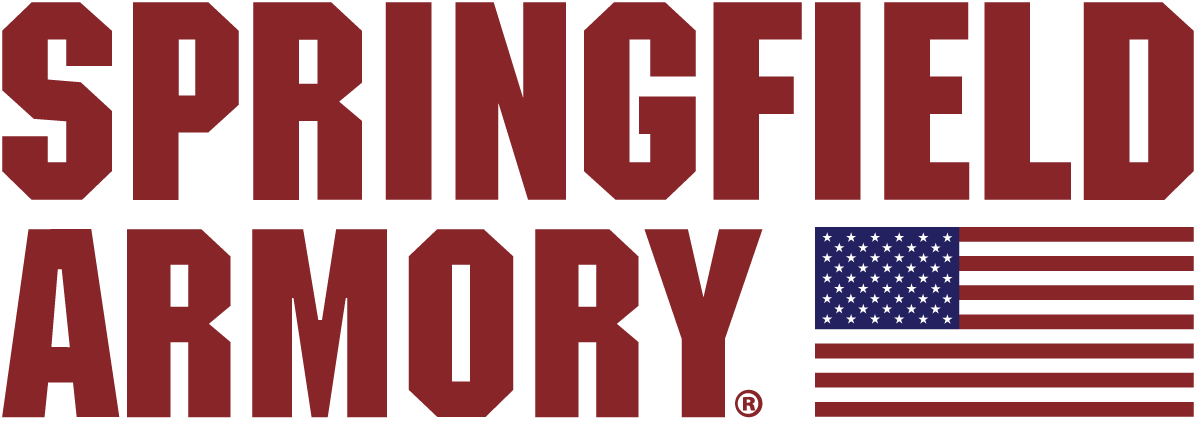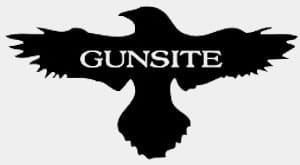Earlier this year, the creative minds at Viridian Weapon Technologies put together an ambitious project. The premise was simple enough — they wanted to create a video that captured the hard work and energy that we all put in at the range. It is an homage, of sorts, to shooting skills, and the result is the video making the rounds now: “Full-Blown Tactical.”
The project grew into something much larger. To capture the frenetic pace of shooting sports in a way that might resonate with viewers, Viridian partnered with Rotor Riot, a company that specializes in first person video (FPV) drones, and with Jay Christensen, whose talent as a drone cinematographer can’t be exaggerated.
To view the result of their project, watch the final video below.
Fertile Ground
To film the “Full-Blown Tactical” video, Viridian needed a range with impressive facilities and excellent trainers. Their choice? Gunsite in Arizona. Gunsite is a sprawling shooting school in the mountainous desert north of Phoenix, and it is the ideal place to host a shoot like this.
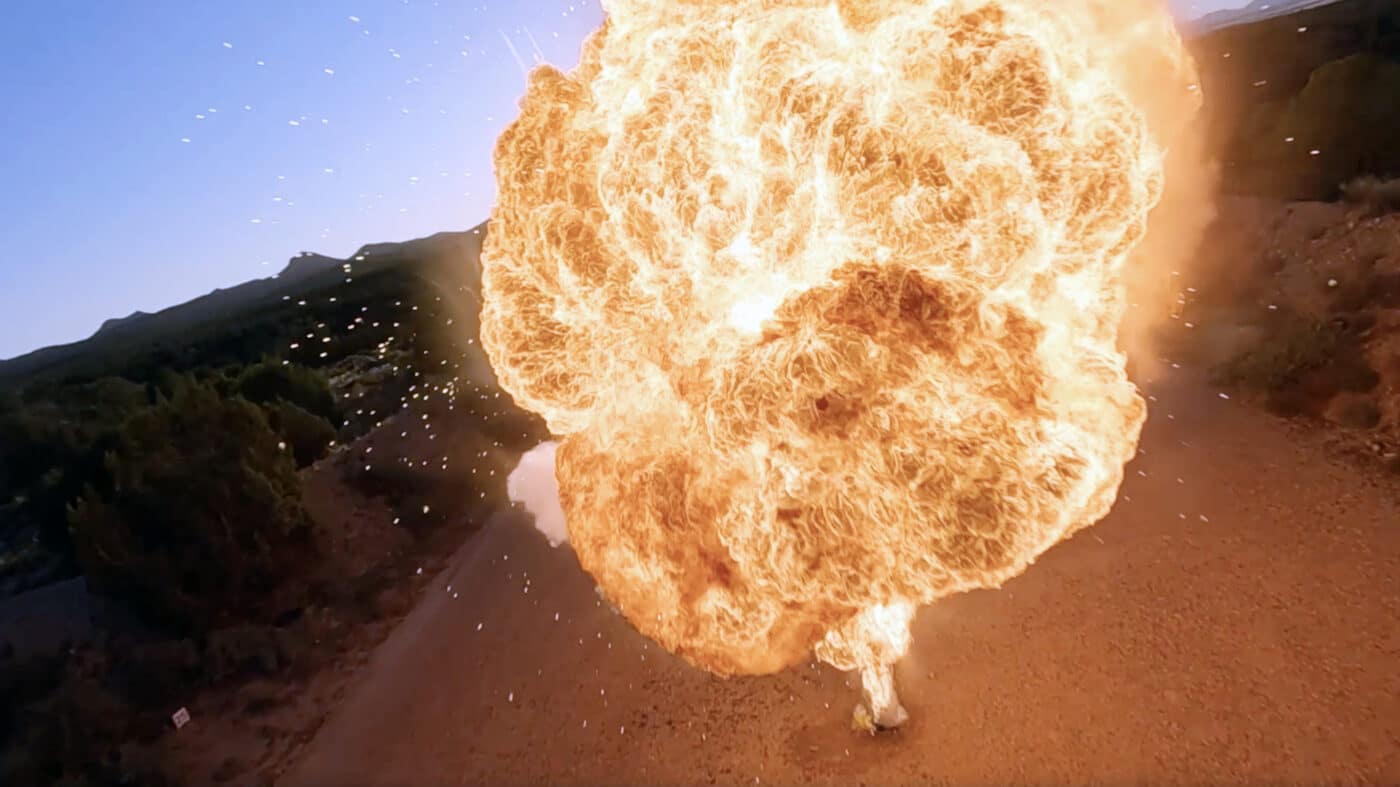
Rehearsals for the project and the actual filming sequence were going to require a couple of thousand rounds of ammunition at the least, and Federal was there to provide everything needed. Springfield Armory provided XD-M Elite and Hellcat pistols, 1911s, SAINT rifles and M1As needed for the execution.
Viridian added C-Series lasers to the Hellcats, and X5L lasers to the 1911s and XD-M Elite pistols. The rifles were all equipped with the HS1 hand-stop lasers. Viridian even made the holsters for the handguns in-house.
The end result is a fast-paced blitz through the campus in a stunning day at the range.
Gunsite
If you’ve never been to Gunsite, you should free up your calendar and go. The school was founded in 1976 by the revered Jeff Cooper, a name that’s mentioned more than once in the archives of The Armory Life.
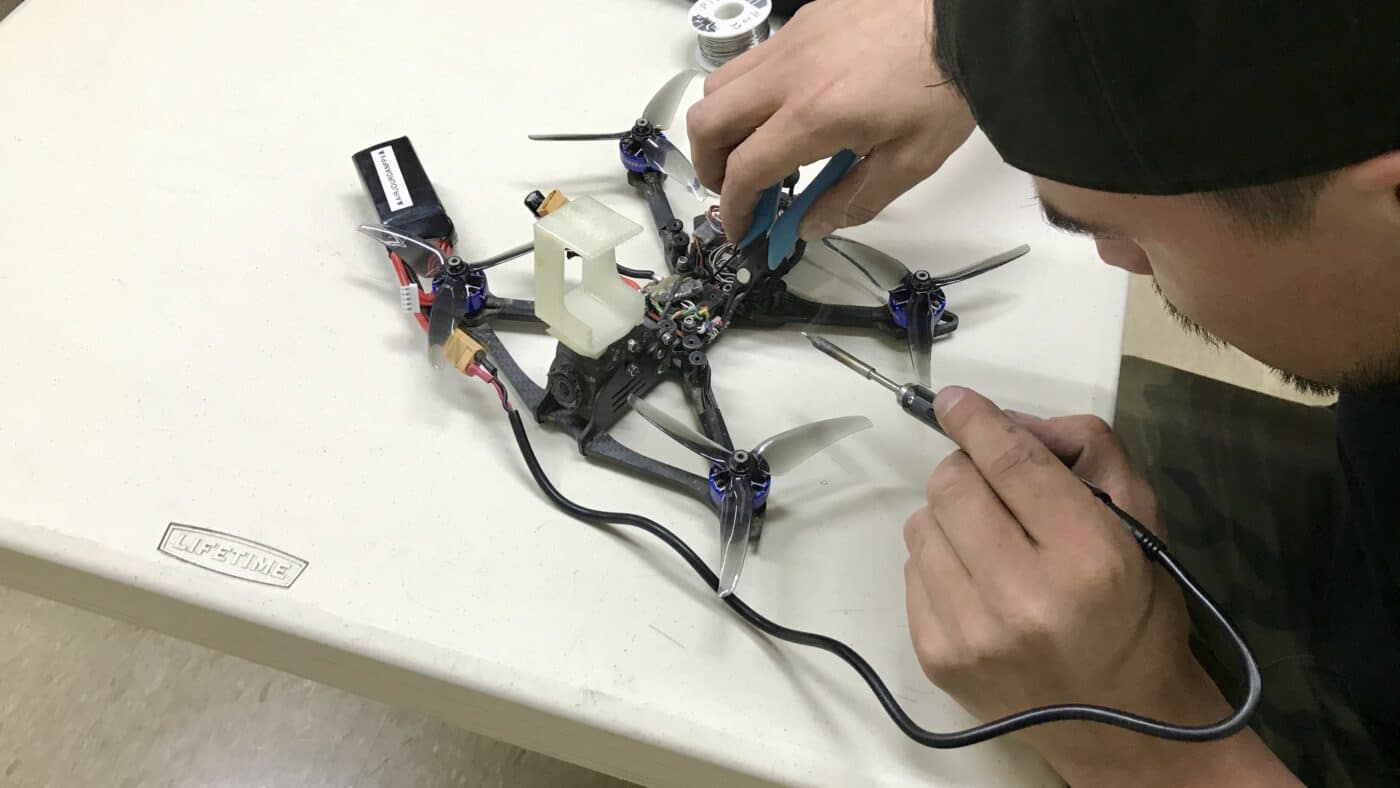
Instructors, all of whom are former (or current) LE or military, teach week-long classes. This is, for them, something of a vacation. This is one of the oldest and most respected training schools in the country. There are 3,000 acres that allow for just about any type of firearms training imaginable.
I spent most of my time on this shoot assisting on the logistics and safety of the shoothouse. We had two Gunsite instructors practicing a cinematic room-clearing drill with live fire inside the shoothouse. The drone began outside, followed the two in, and moved sequentially through the house with them.
There were numerous takes — more than 10. We began with a case — 500 rounds — of frangible ammo from Federal and ran through the entire case. The frangible rounds were ideal for both the safety of the officers inside and the crew that was on the other side of the walls.
As you might expect in these kinds of tight corners, there were some hiccups. The on-screen talent had to hold fire more than once. The drone frequently flew into the girders above the rooms. One was caught in a closing door. There were even times when odd Arizona desert winds ripped through and closed doors or caught the drone and blew it off course.
The end result, though, offered an epic clip. And Viridian’s lasers were well suited for the interior of the shoot-house.
Shooting at Drones
Jay Christensen, the drone cinematographer, proved exceptionally capable in these tight spaces. While the team had conducted site visits and mapped out the way each leg of the shoot would run, the addition of talent, and later live fire, upended some of those plans. The team, though, made in-the-moment decisions and adjustments that answered each of the challenges.
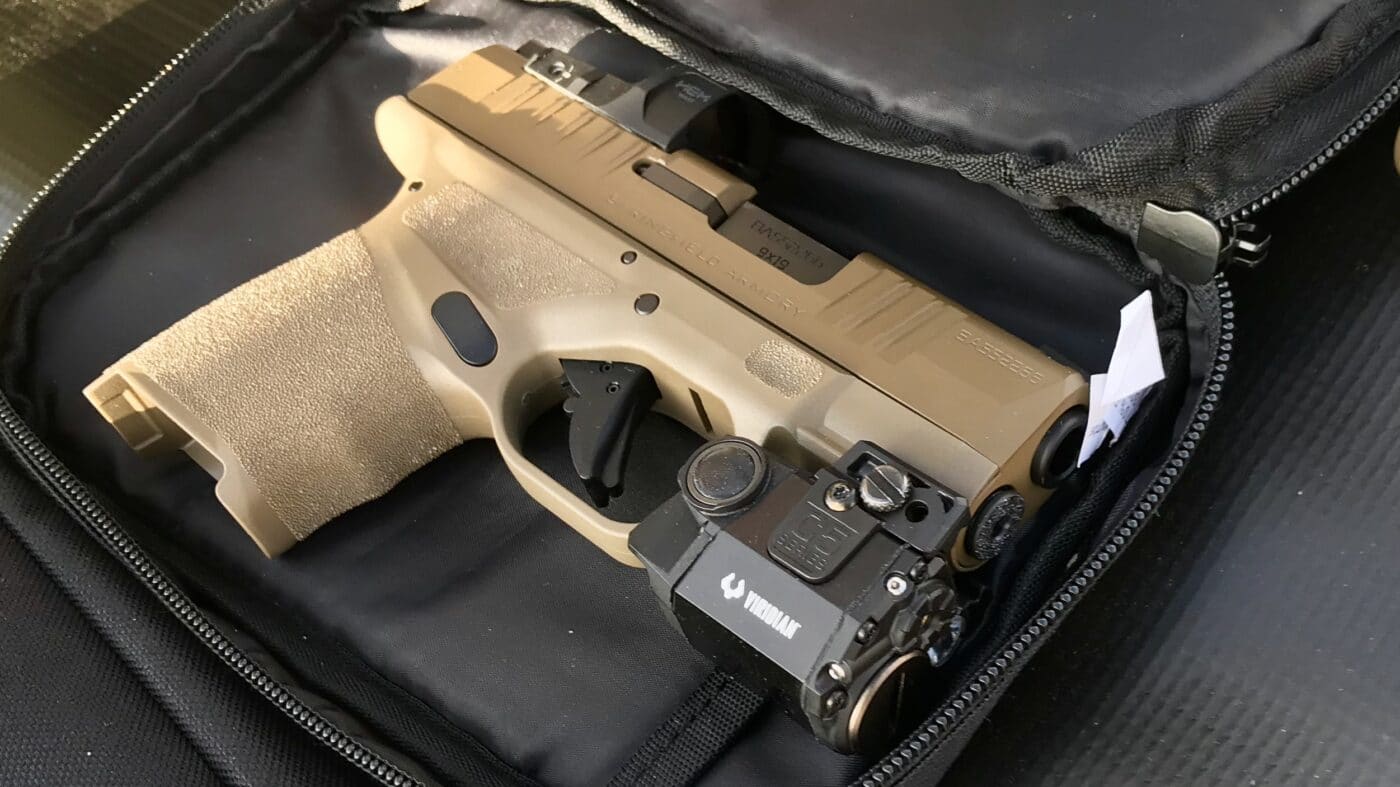
We did shoot down a drone. This wasn’t one of the smaller drones, either. It happened on the section of the range where the security team was running transition drills. At the time, we thought it was a 5.56mm round, but — after watching through raw footage — it looks like it was muzzle blast coming off the left side of the SAINT and not the bullet.
The drone itself survived the instant take-down. The camera, too — though the lens hood wasn’t as lucky. The lens hood and the camera mount proved to be the only losses.
Watching Christensen work the drones was intimidating. With his DJI FPV goggles on, he looked like something out of my 80s childhood sci-fi imagination. But this is real, and the first-person view enabled him to run insanely close to the shooters, weaving in and out.
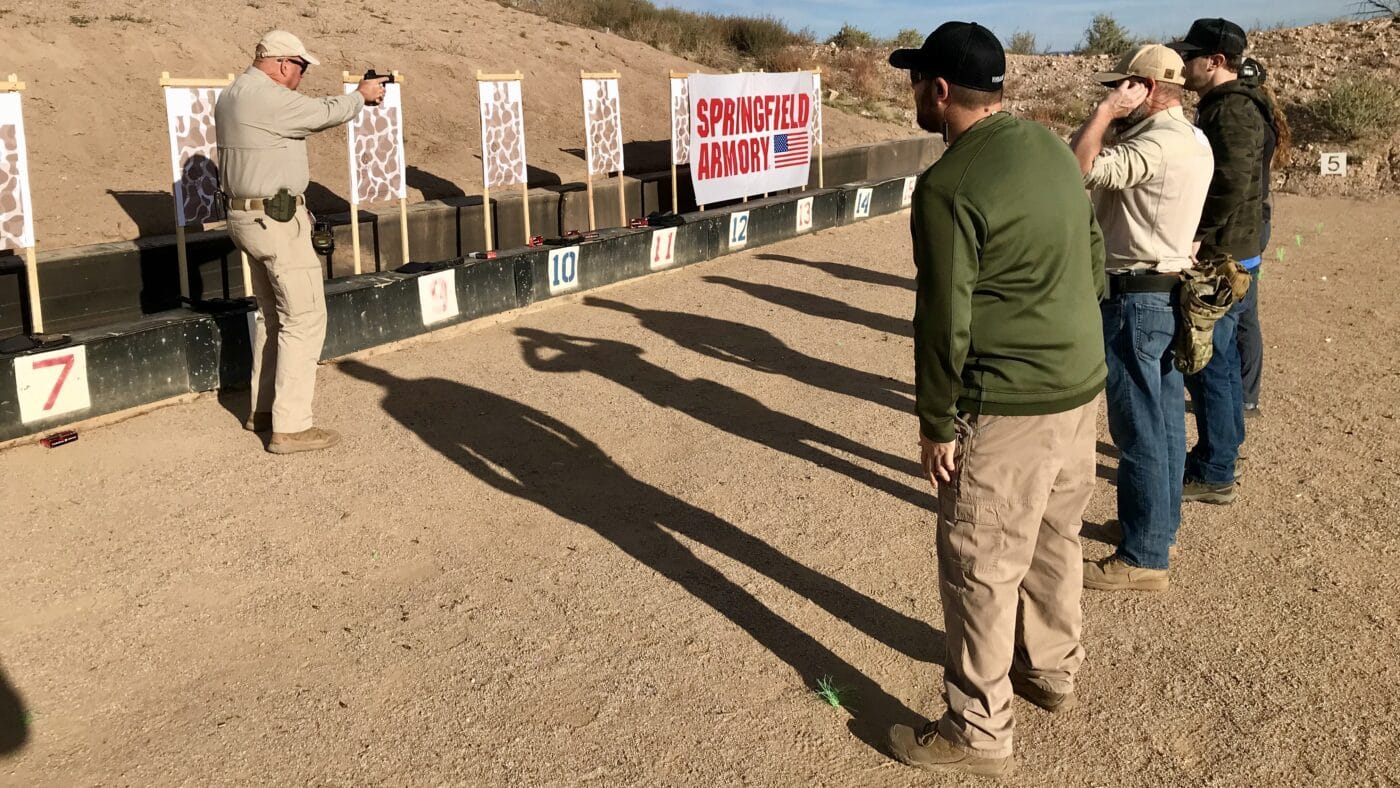
Some of the smaller drones, like the ones navigating the shoothouse, had blade guards to allow the pilots to run right up onto the shooters without the risk of cutting them. The one used for the slow-motion shots are much larger, with heavier cameras and more rotors, requiring even more caution.
These drone pilots carried spare batteries the way gun-guys carry spare mags. The blade guards add weight and limit thrust, so the motors have to turn faster, and that quickly drains batteries.
There was an almost sacrificial role for the smaller drones. As the video shoot progressed, the crew ratcheted up the risk to the drones. The first day culminated in a rather large fireball for the video — one that we could feel from our vantage point well behind the firing line. And those smaller FPV drones were threading into the explosion, running up through the flames, and even looping around the smoke rings.
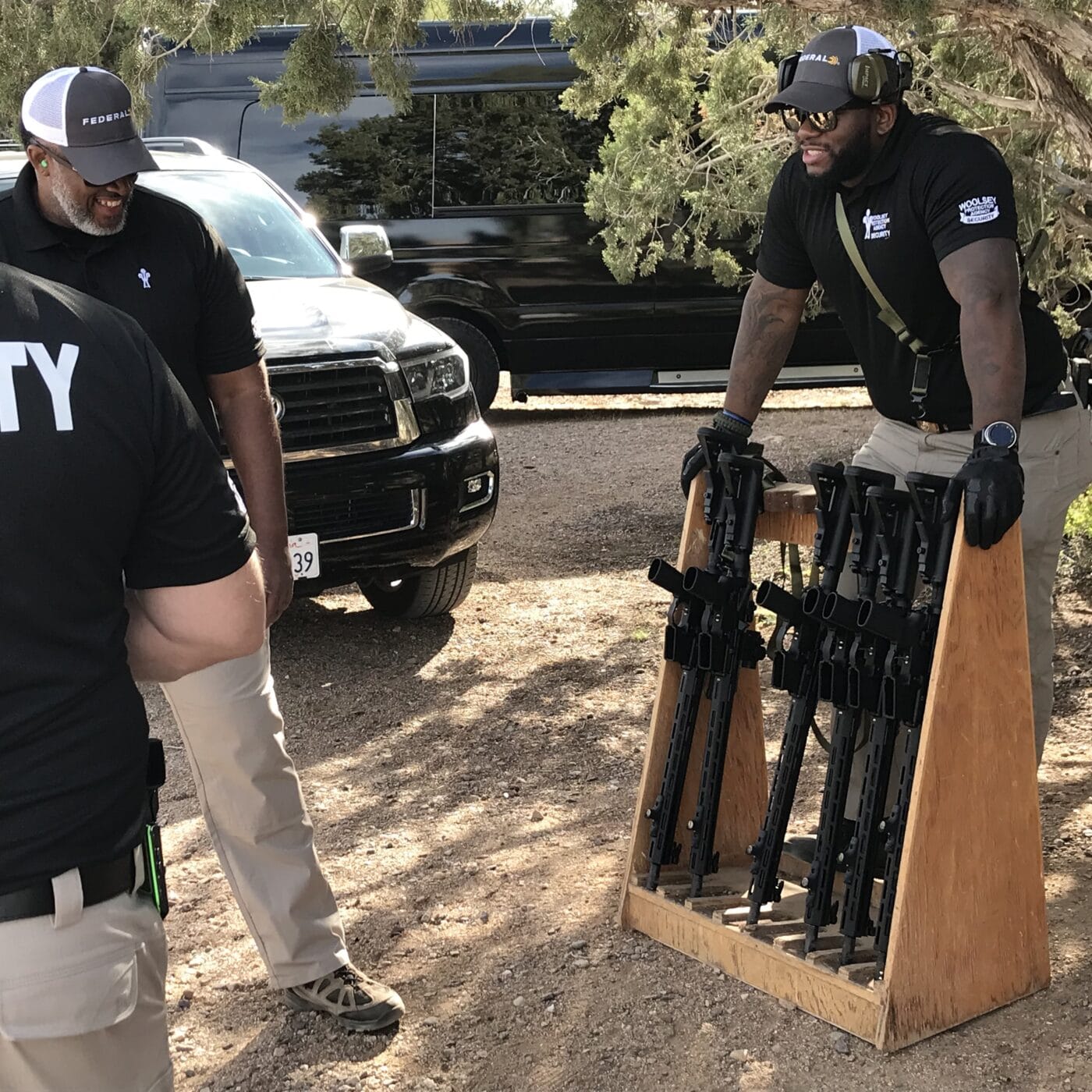
In the effort, wiring insulation melted. Drones came back coated in carbon. Some had melted propeller tips. After the shoot was wrapped for the day, the Rotor Riot team took them back up to the Gunsite classroom, cracked open their parts kits, fired up the soldering irons, and began rebuilding.
An Inventor’s Ingenuity
Even as someone who owns a drone, this was all new to me. I only have one drone, and I fly it like my grandmother drove her Ford Fairmont. I sank a drone in the Gulf of Florida this summer when I flew it into a sailboat’s rigging, and I’ve been a coward ever since.
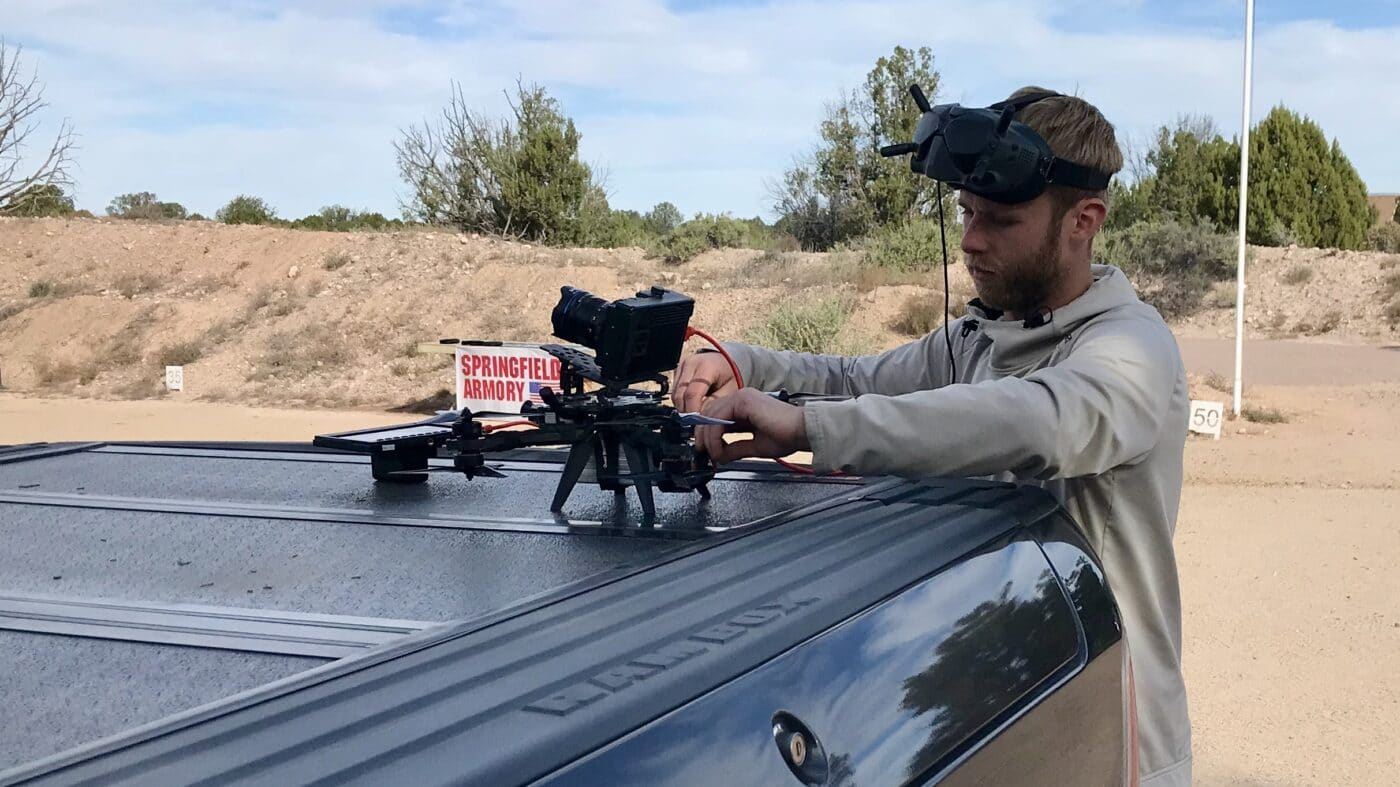
These kids (and I do mean kids — the youngest on the crew was 16) fly these drones like NASCAR drivers. They push the literal boundaries, secure in the knowledge that these drones are tools, and not precious.
The best flying of the entire weekend, at least for me, was an unscripted competition between two Rotor Riot pilots that mimicked a game of HORSE. One pilot would pull off a trick, and the other would have to follow. One of these challenges was to fly between the steel girder that supports the roof of the shoothouse and the wall — a vertical gap that offered maybe 8″ of clearance. To thread the gap, the pilots would belly-out the drone, slam it vertically into the wall — like skipping a rock on the surface of a lake — only sideways on a wall and at full speed. With GoPro cameras mounted on the drones, too, there was no margin of error.
When they crashed, which they did repeatedly, the pilots could right the drone and take off again — all without leaving the shade of the junipers where they were sitting.
Falling Into Place
To pull off a project like this, everything had to work. And it did. The Springfield Armory guns performed flawlessly. Handguns and rifles. Not one hitch.
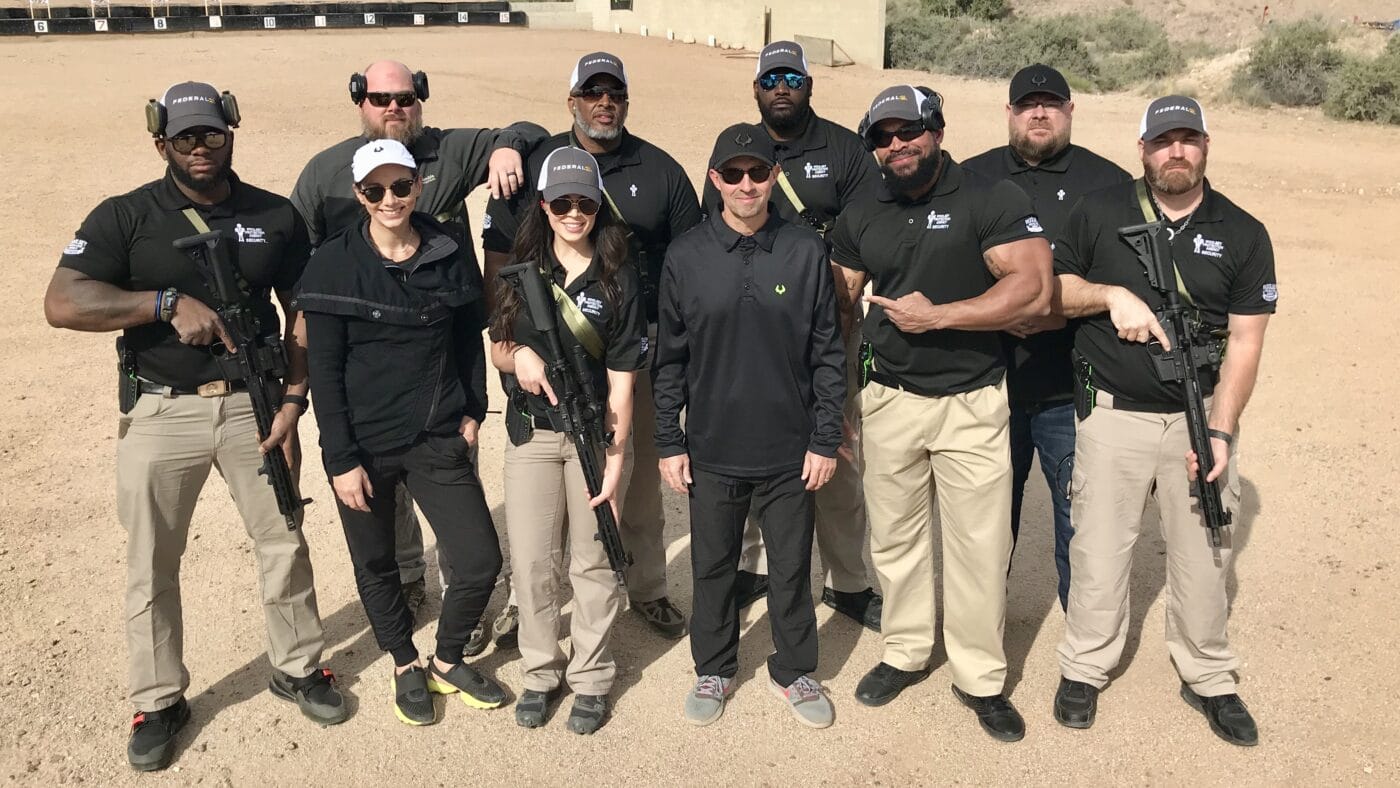
The R.O.s kept the range safe. The technical crew matched appropriate rounds from Federal for the shooting stations, paper targets, steel targets and shooter distances. We all expected more of an issue from spall off the steel, but the drones ripped through it, confirming the attributes of the frangible ammo that none of us are ever willing to test.
And it was Viridian’s vision that is evident at the heart of all of this. Lasers are far easier to see in darkness than they are in daylight, but filming sequences like this requires that light.
At the end of the shoot, I sat down with Brian Hedeen, CEO of Viridian Weapon Technologies, and asked him about his vision and how it was unfolding.
“‘Full-Blown Tactical’ isn’t a product video,” he said. And that’s true. This isn’t meant to announce a new laser or a light. “This is about a feeling and capturing that feeling in a way that will inspire others.” I would say that Viridian succeeded in that effort.
Editor’s Note: Please be sure to check out The Armory Life Forum, where you can comment about our daily articles, as well as just talk guns and gear. Click the “Go To Forum Thread” link below to jump in!
Join the Discussion
Featured in this video
Continue Reading
Did you enjoy this video?

 43
43





